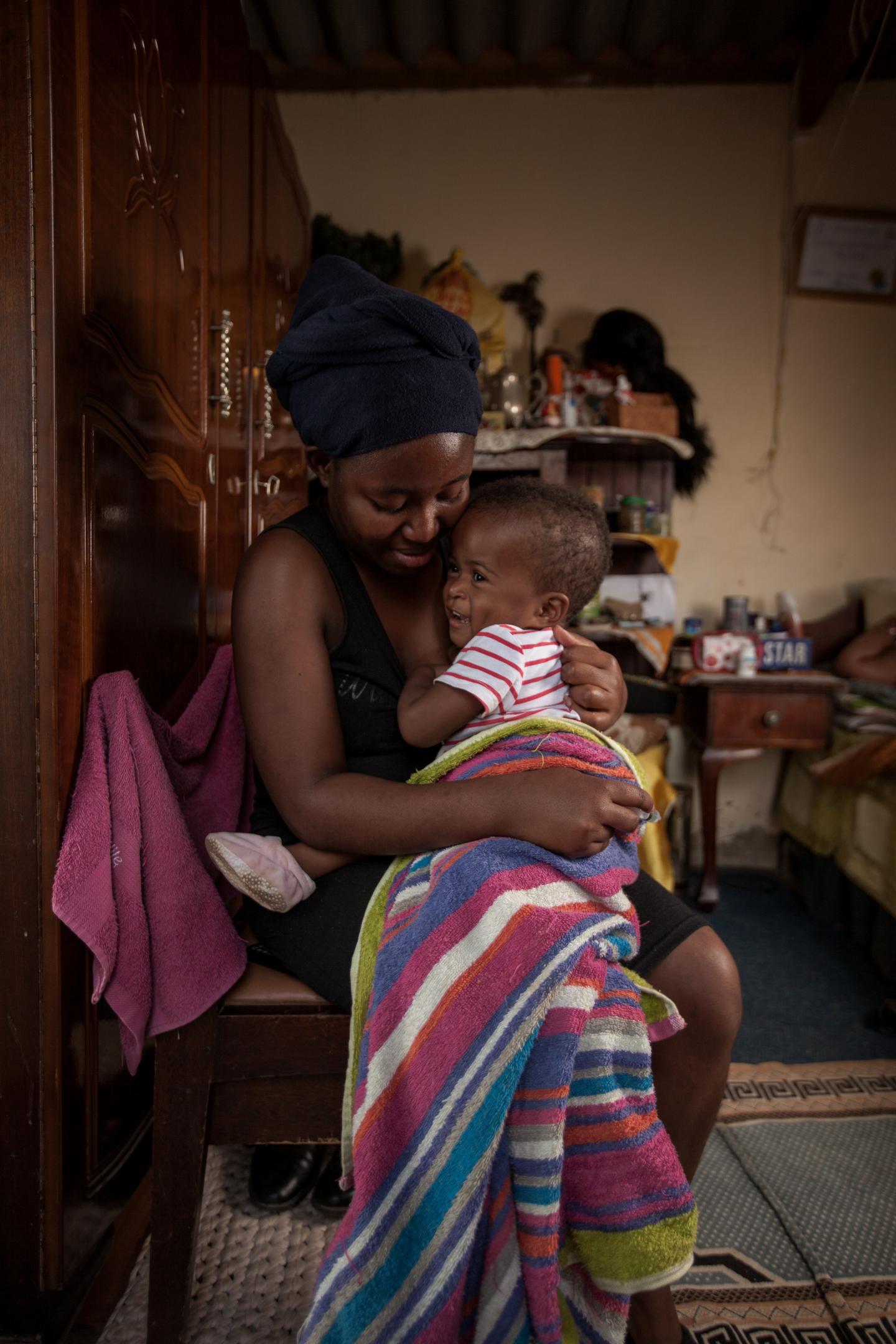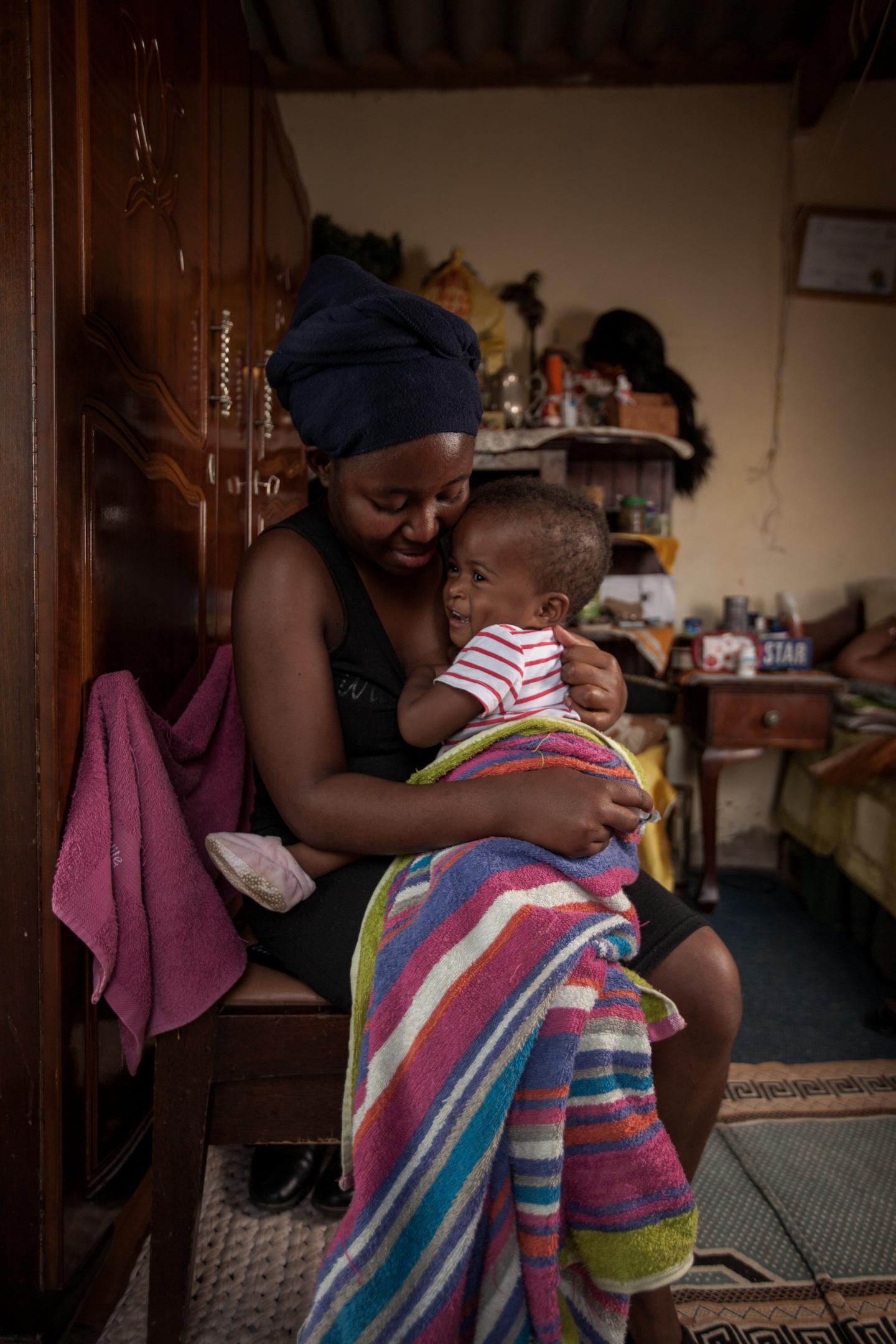
Credit: Scholars & Gentlemen /DNDi
[Seattle, USA, February 14, 2017] The non-profit research and development organization Drugs for Neglected Diseases initiative (DNDi) has released results of a study in South Africa that will make it easier for healthcare workers to treat children living with HIV who are co-infected with tuberculosis (TB). The study, presented as a late-breaker this week at the Conference on Retroviruses and Opportunistic Infections (CROI) in Seattle, provides essential evidence and data to counter the negative interactions between two critical HIV and TB treatments.
"TB is extremely common in children with HIV but until now, when a child has both diseases, we simply did not know for certain if our approach to dosing was correct. This is crucial to ensure long-term control of the HIV virus and keep kids alive," said Dr Helena Rabie from Stellenbosch University and lead investigator of the DNDi study. "These kids are extremely neglected: HIV-positive children have fewer treatment options and in many cases cannot switch to different antiretrovirals when taking concomitant TB treatment."
Protease inhibitors such as lopinavir (LPV) form a key component of HIV treatment, but must be "boosted" with ritonavir (RTV) to ensure they inhibit the virus. But when children are also treated for TB, the drug rifampicin, which forms the backbone of TB treatment, reduces the concentration of RTV and hence the effectiveness of LPV. To counteract this effect, the amount of ritonavir in the lopinavir/ritonavir (LPV/r) combination must be increased, a procedure known as "super-boosting".
An earlier study had suggested that super-boosting LPV/r with ritonavir up to a 1:1 ratio during a child's simultaneous HIV and TB treatment, as opposed to the commonly used 4:1 ratio used during treatment for HIV alone, was effective. But the study included only 15 children. DNDi and partners aimed to consolidate the evidence around the safety and effectiveness of super-boosting through a larger study including 96 children – 30 of whom were under one year of age at enrollment – across five sites in South Africa.
The final results presented this week at CROI show that this approach counteracts the negative interactions between LPV/r and rifampicin, easing the co-administration of HIV and TB treatment for this particularly vulnerable population.
"This study brings the scientific proof needed so that health workers can give children the right dose and ensure that their HIV and TB treatment works," said Dr Marc Lallemant, Head of DNDi's HIV program.
Interim results from the study were presented by DNDi to the World Health Organization (WHO) guidelines review committee, which recommended super-boosting of LPV/r in TB/HIV co-infected children in 2016.
But further uptake by other countries of this therapeutic advance is hampered by the short shelf-life of pediatric RTV, as well as difficulties giving both LPV/r and stand-alone RTV to children, linked to their high alcohol content and extremely bitter taste. In Kenya and Uganda, DNDi and partners are piloting a more child-friendly formulation of LPV/r that comes in the form of pellets. In a separate study due to start in South Africa, DNDi and partners will pilot super-boosting in children co-infected with TB and HIV using a new solid RTV formulation.
"DNDi's ultimate goal is to deliver a simple, first-line antiretroviral regimen that overcomes the many different barriers that stand in the way of giving treatment to infants and young children," said Dr Marc Lallemant. "With our industrial partners we're aiming to develop an easy-to-use '4-in-1' fixed-dose combination that is palatable, does not require refrigeration, and that thanks to super-boosting can address drug-drug interaction with medicines for TB."
###
Press contact:
Ilan Moss (New York) +1 646 266 5216, [email protected]
Linet Atieno (Nairobi) +254 705 639 909, [email protected]
Photos available
Acknowledgements
DNDi's HIV program is supported by UBS Optimus Foundation, Switzerland; UNITAID, Switzerland; Médecins Sans Frontières, International; the Agence française de Développement, France; and a number of private donors.
DNDi wishes to acknowledge and thank its South African partners in the study: Stellenbosch University and Tygerberg Children's Hospital; Perinatal HIV Research Unit; Shandukani Research Centre; Empilweni Services and Research Unit, Rahima Moosa Mother and Child Hospital; Enhancing Care Foundation; Department of Health and Department of Science and Technology.
DNDi also thanks its industrial partners AbbVie and Cipla Ltd for collaboration in the '4-in-1' project.
About DNDi
A not-for-profit R&D organization, DNDi works to deliver new treatments for neglected diseases, in particular leishmaniasis, human African trypanosomiasis, Chagas disease, specific filarial infections, mycetoma, hepatitis C, and pediatric HIV. Since its inception in 2003, DNDi has with its partners developed two new antimalarial fixed-dose combinations, the only pediatric medication for Chagas disease, and a new combination treatment for sleeping sickness. Thanks to clinical trials led by DNDi, national or international guidelines have been changed for visceral leishmaniasis treatments in Africa and Asia, and for children co-infected with HIV and tuberculosis.
Out of the Dark: Progress in Treating HIV/TB in Kids Part 1 –
Children living with HIV and TB face a unique challenge: the drugs used to treat each disease can cancel each other out. This short video – filmed in July 2016 in Durban, South Africa – documents a promising study that was carried out by the Drugs for Neglected Diseases initiative (DNDi) to address this challenge.
Out of the Dark: Progress in Treating HIV/TB in Kids Part 2
Part two of a short filmed in July 2016 in Durban, South Africa. Despite recent progress in treating children with HIV, kids like Mel are still neglected. Better treatments are needed.
Pic and videos credited to © Scholars & Gentlemen/ DNDi
Media Contact
Ilan Moss
[email protected]
646-266-5216
@DNDi
############
Story Source: Materials provided by Scienmag





